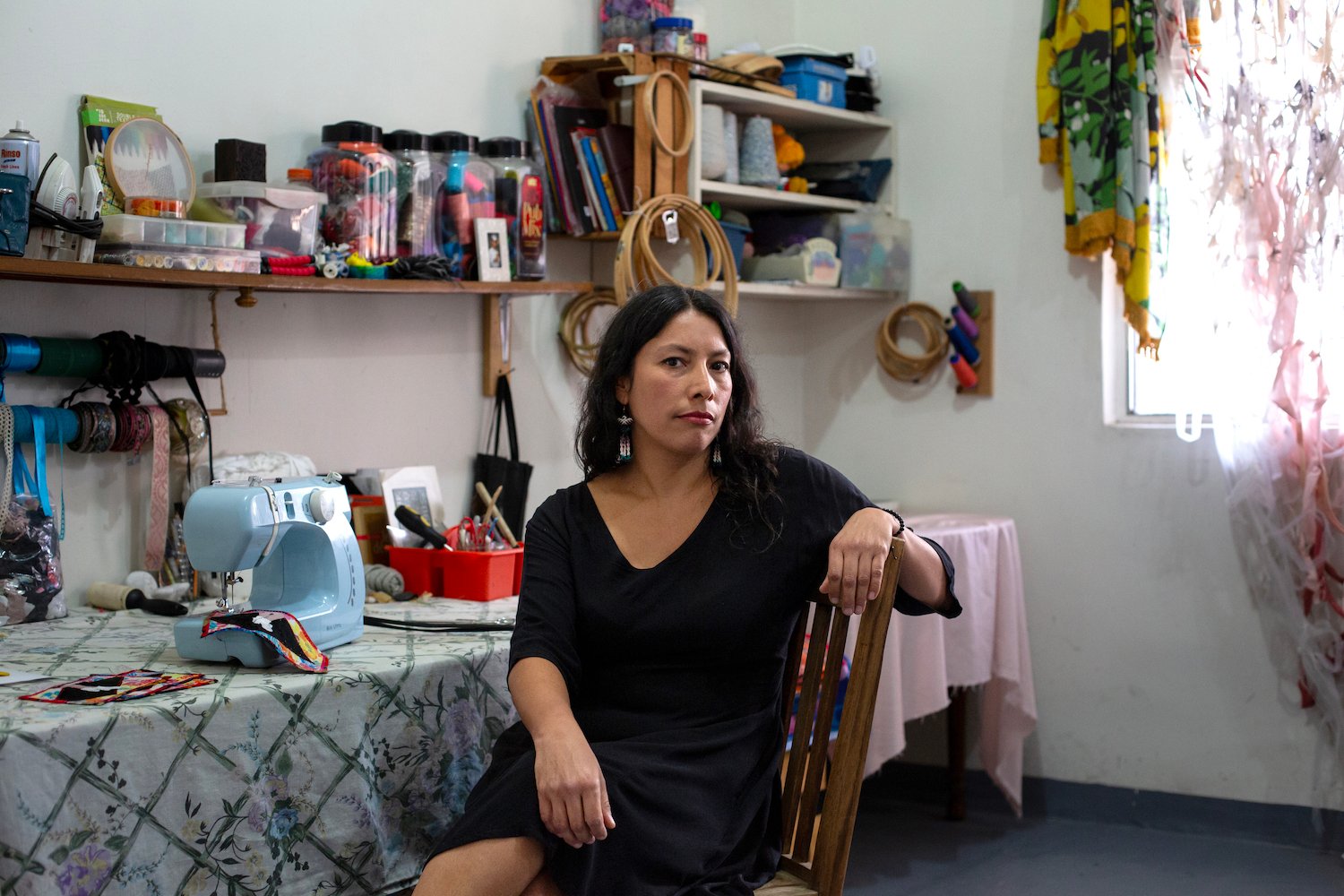Marisa Raygoza
“There is an inventiveness in the people of Tijuana, a creativity to solve things with what they have and as they can,” Marisa Raygoza says. “That’s how this city was born—[from] people who came from many places and had to succeed as best they could.”
The artist flexes her own inventiveness to craft magic with a needle and thread. Her textile sculptures and other works explore femininity and the human body, using her border city’s dynamics as inspiration to create.
In 2014, she received a Baja California state grant to produce a three-minute short animation called Trayectoria de una lágrima (A tear’s path) with more than 2,800 pieces of hand-embroidered fabric. This year, the short was selected for the Annecy International Animation Film Festival tribute to Mexico in France.
She will be using another state grant in 2024 to focus on a new embroidery-animation project called Modos de saltar el borde (Ways of jumping the edge).
San Diegans can see her work in a collective exhibition at the Visions Museum of Textile Art in Liberty Station. The showcase, on view from May to September 2024, is part of a series of events celebrating the San Diego-Tijuana region’s designation as a World Design Capital.
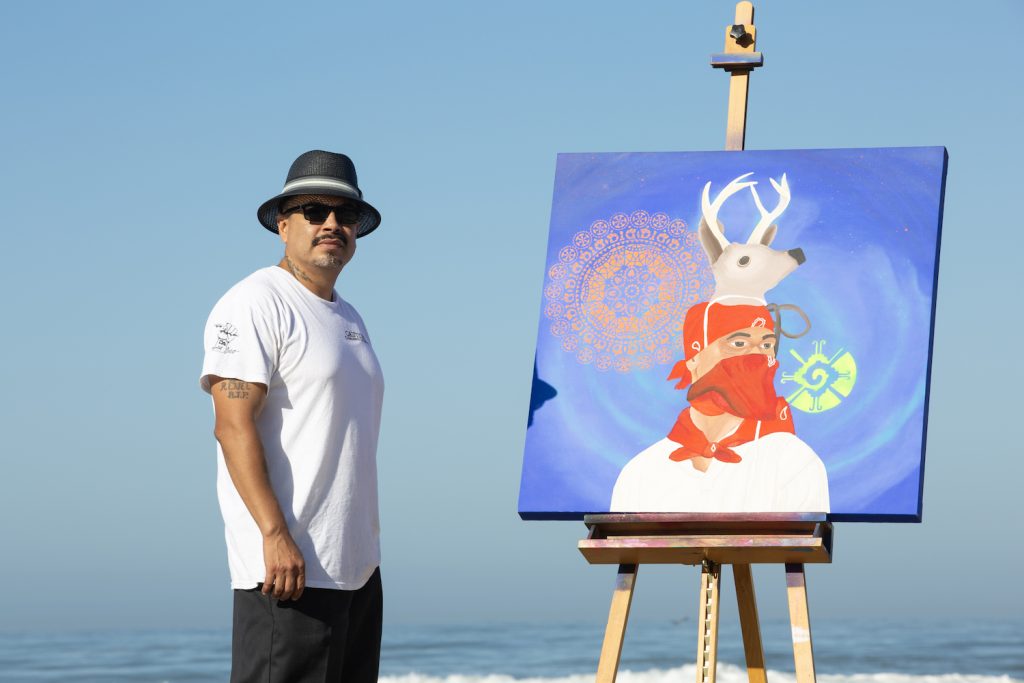
Javier Salazar Rojas
Javier Salazar Rojas grew up in Oakland believing he was an American citizen—only to learn at age 11 that he was undocumented. After facing two deportations (one as an adolescent and one nine years ago), he began painting to combat his anxiety and depression.
His earliest work depicted Mexican and Hispanic cultural icons. Over time, he began infusing his canvas with pro-immigration messages. Now known in the region as “Deported Artist,” he considers himself an “artivist.”
“I want to change people’s perception of deportees through my art,” he says. “When we get deported, people forget about us. If they don’t see us, they don’t think about us anymore. I want to give deportees a voice and visibility.”
Earlier this year, he collaborated with another deported artist, Chris Cuauhtli, on a provocative protest mural on the Mexican side of Playas de Tijuana’s Friendship Park: former president Donald Trump and President Joe Biden kissing above the words “My God help me to survive this deadly love.” Salazar and Cuauhtli designed the piece to call out Biden’s broken promise to stop the construction of a border wall.
Salazar vends his work at Tijuana and California art shows and online through Hijas del Maíz, a project that Salazar’s wife Joanna Garcia Salazar started in Oakland to fund her monthly visits to Tijuana.
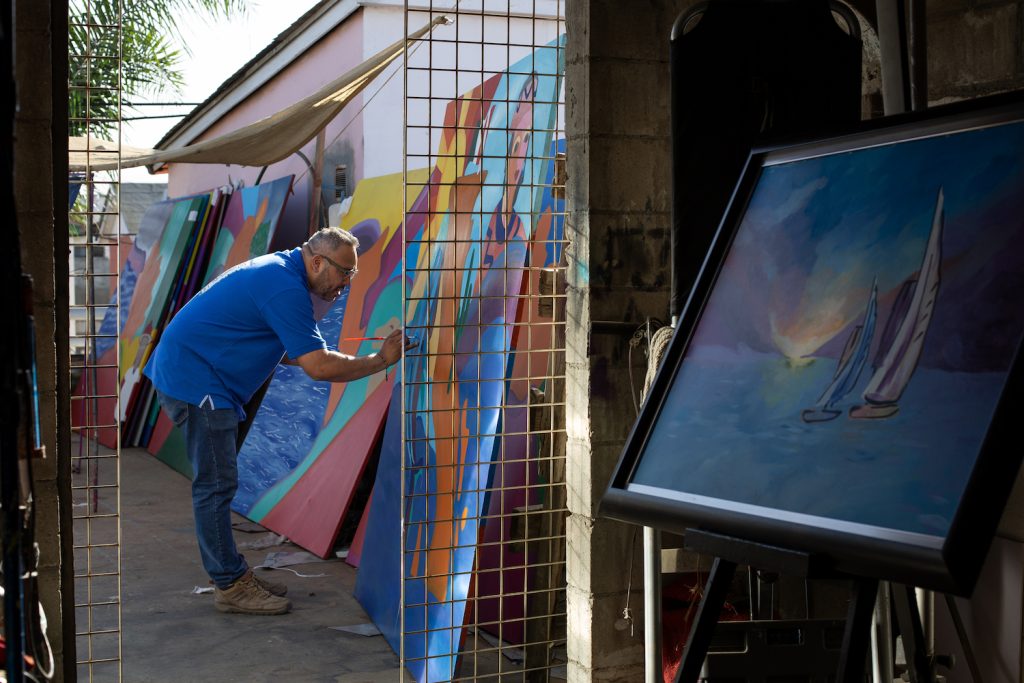
Enrique Chiu
Eighteen years after starting the Mural de la hermandad (Brotherhood mural)—a colorful community project that covers over 60 miles of the international border wall’s Mexican side—Enrique Chiu watched American authorities begin to dismantle his work. The poles of the border wall are being replaced. The first one came down this fall exactly where Chiu’s efforts started: in Playas de Tijuana.
But Chiu’s not giving up. “I’m a very positive person in all that I do. I have spent thousands of dollars of my own on this project, planning, painting, and organizing, but I also knew that it was something ephemeral,” he says. “What I see now is a new canvas and an opportunity to renew our project.”
Over nearly two decades, the mural became a community effort, bringing local and migrant families together to paint on weekends throughout the year. Now, Chiu envisions composing a section of the mural in every city on the US-Mexico border.
In addition to his own work as an artist, Chiu is a promoter of the arts and an activist. He believes that art can be a way to deal with social issues, advocating for a culture of peace and migrants’ rights in a city that saw more than 2,000 violent killings in 2022 and receives thousands of migrants every year.
Chiu’s work is visible in public buildings, over bridges, and at his 11 galleries in Tijuana. He has painted more than 350 murals throughout Mexico.
His latest project will bring 30 murals to the pedestrian entrance to Tijuana on the Mexican side of the San Ysidro Port of Entry in 2024—the biggest public art display in the city.
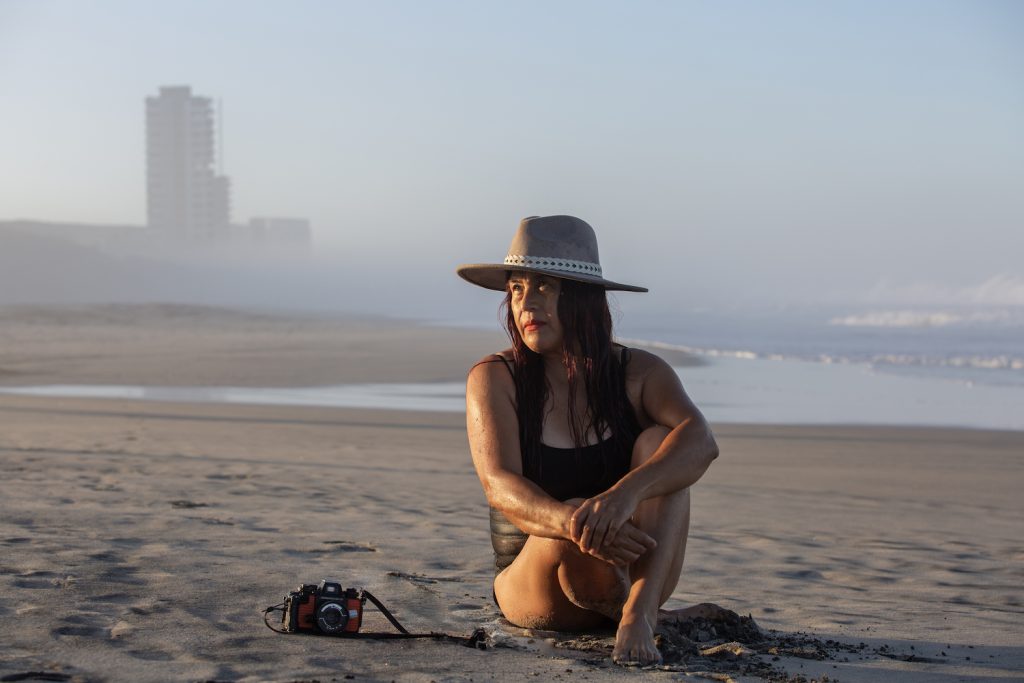
Angélica Escoto
After more than 15 years in the art business, visual artist Angélica Escoto knows that it’s not an easy world to navigate—especially because people tend to forget about the “business” side of things.
“Being a creative artist is challenging because some people believe that the artist doesn’t deserve a profit,” she says. “Being a woman makes it more challenging. They all want a piece of your art for free. They don’t want to pay for the time, the supplies, and the effort you have invested in it.”
But, increasingly, institutions have recognized and emphasized the value of her work. In 2022, a panel of arts professionals selected her as a 2022 San Diego Art Prize recipient, an annual regional award that includes exhibition opportunities and a cash prize. Her photos, videos, and performances have appeared all over the world, from Mexico and the US to Europe and South America.
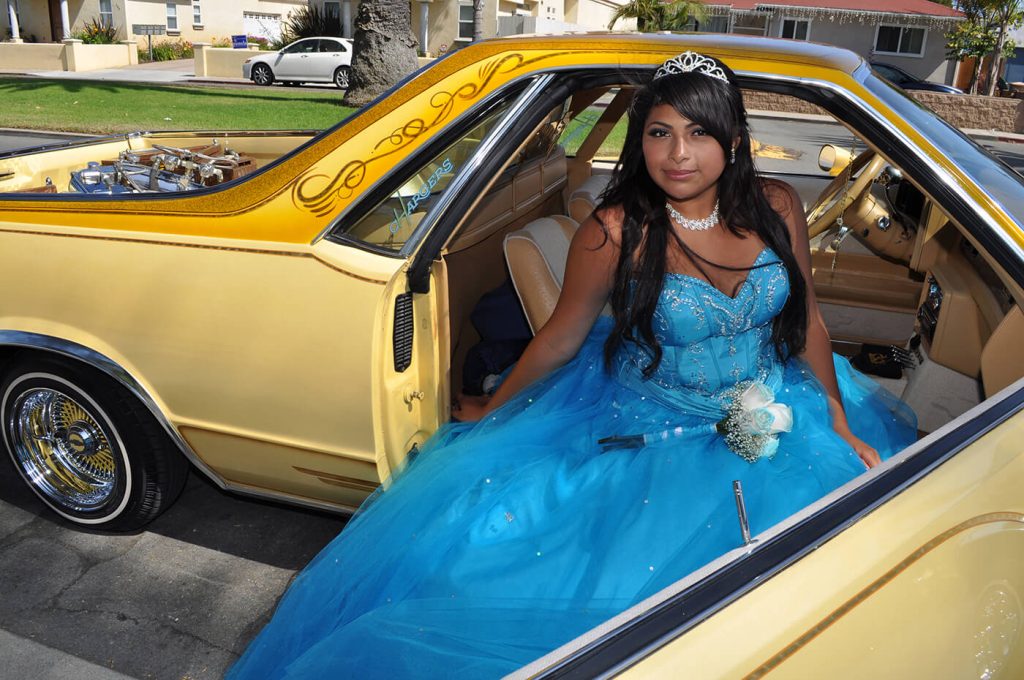
Frequently shot in the breathtaking natural landscapes of Baja California, Escoto’s work has a solemn, cinematic quality. The artist’s body, often nude, engages guilelessly with the earth around her.
PARTNER CONTENT
In 2018, she presented a project entitled They don’t dance alone, documenting 300 quinceañeras. The 15-year-old girls photographed are the daughters of Mexican migrants from Oaxaca, Guerrero, and Michoacán living in San Diego.
After being shown in Tijuana, the project appeared at a museum in Oaxaca. In 2024, seven photos from the series will be displayed at the San Diego International Airport.















